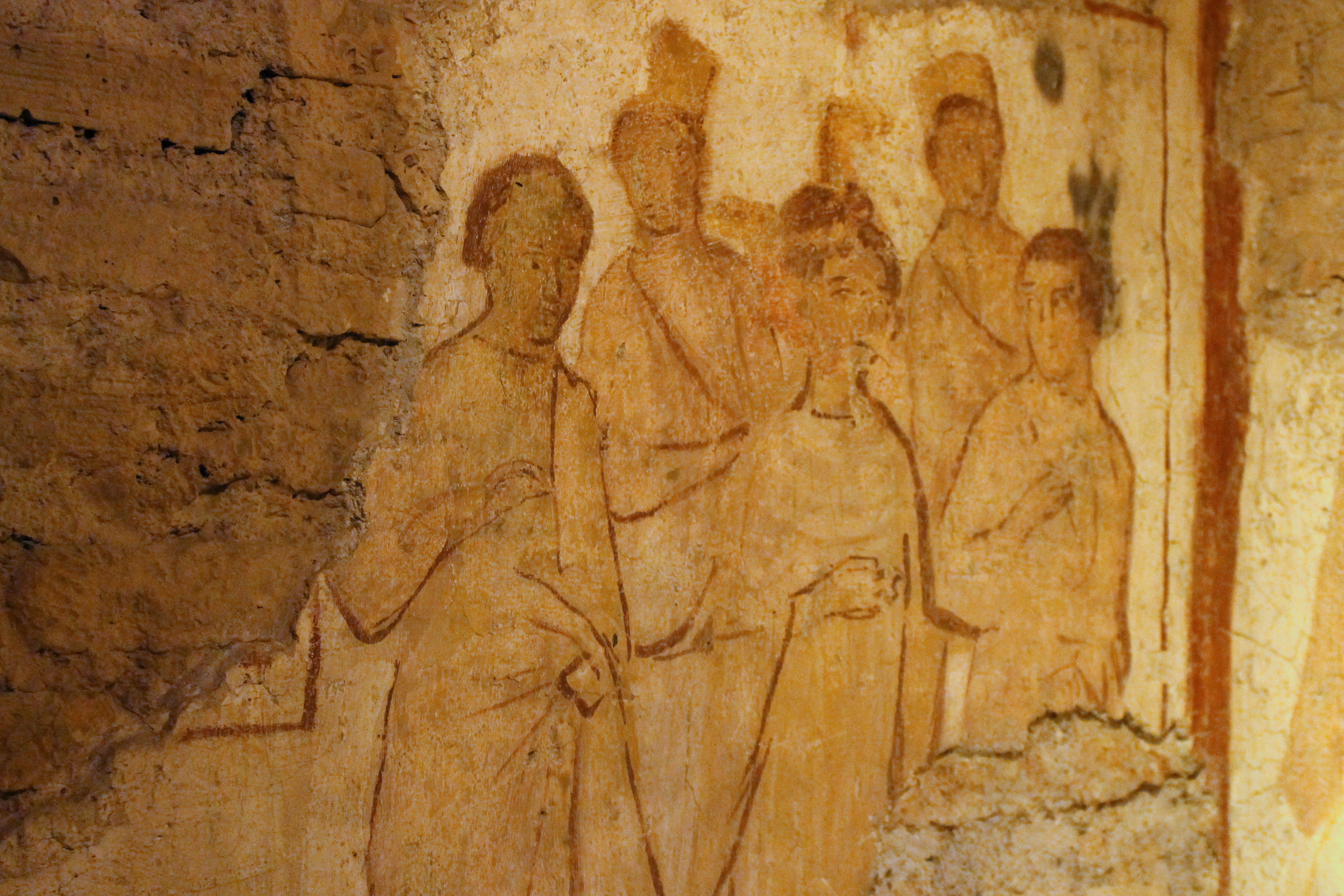Template:Did you know nominations/Crispus, Crispinianus, and Benedicta
Jump to navigation
Jump to search
- The following is an archived discussion of the DYK nomination of the article below. Please do not modify this page. Subsequent comments should be made on the appropriate discussion page (such as this nomination's talk page, the article's talk page or Wikipedia talk:Did you know), unless there is consensus to re-open the discussion at this page. No further edits should be made to this page.
The result was: promoted by Cwmhiraeth (talk) 07:17, 16 March 2017 (UTC)
| DYK toolbox |
|---|
Crispus, Crispinianus, and Benedicta
- ... that according to their martyrdom account, Crispus, Crispinianus, and Benedicta went to comfort John and Paul, only to end up buried next to them? Source: "Audito beatus Presbyter Crispus, quia constricti essent intra domum suam Joannes & Paulus; venit ad eos cum Crispiniano & Benedicta, ut eos confortarent. [...] Sepelieruntque eos in domo Joannis & Pauli, non longe ab ipsis." (Acta Sanctorum)
- ALT1:... that according to their martyrdom account, Crispus, Crispinianus, and Benedicta prayed to know where John and Paul were buried, and God revealed the place to them? Source: "Poscentes, ut aliquod signum Dominus [...] ostenderet eis de sanctis Martyribus, ubi fuissent sepulti: & manifestavit illis Deus, juxta desiderium eorum." (Acta Sanctorum)
- Reviewed: Pangolin trade
Created by Alekjds (talk). Self-nominated at 11:58, 5 March 2017 (UTC).
 All facts that support a piece of information in the hooks need to be individually sourced, by adding a relevant citation to the end of each sentence that contains information for the hooks. Template:Ping I'll come back to continue the review. Mary Mark Ockerbloom (talk) 02:40, 9 March 2017 (UTC)
All facts that support a piece of information in the hooks need to be individually sourced, by adding a relevant citation to the end of each sentence that contains information for the hooks. Template:Ping I'll come back to continue the review. Mary Mark Ockerbloom (talk) 02:40, 9 March 2017 (UTC)
- Template:Ping Thank you. I've added the additional citations. — AJDS talk 12:01, 9 March 2017 (UTC)
Lua error: expandTemplate: template "y" does not exist.
- Template:Ping Many thanks for the exhaustive evaluation and the further research re: sources, all of which has served to improve the quality of the article. I've improved the citations in line with your suggestions, and added a citation to the paragraph you mentioned (from Webb's book; the JSTOR article on the excavations wouldn't load for me for some reason). Also, the translations of the Latin, which are my own, I have supplemented with the original text from the Acta Sanctorum. Here's the diff to show what I've added or changed. If I've left anything unaddressed, please let me know. — AJDS talk 08:51, 10 March 2017 (UTC)
 Excellent! Thanks for the changes, and here's another citation in place of the one I mentioned that didn't work, I think you'll enjoy it.[1]
Excellent! Thanks for the changes, and here's another citation in place of the one I mentioned that didn't work, I think you'll enjoy it.[1]
- ↑ di S. Stanislao, Passionista Padre Germano (September 1890). "The House of the Martyrs John and Paul Recently Discovered on the Coelian Hill at Rome". The American Journal of Archaeology and of the History of the Fine Arts. 6 (3): 261–285. doi:10.2307/496224. Retrieved 10 March 2017.
